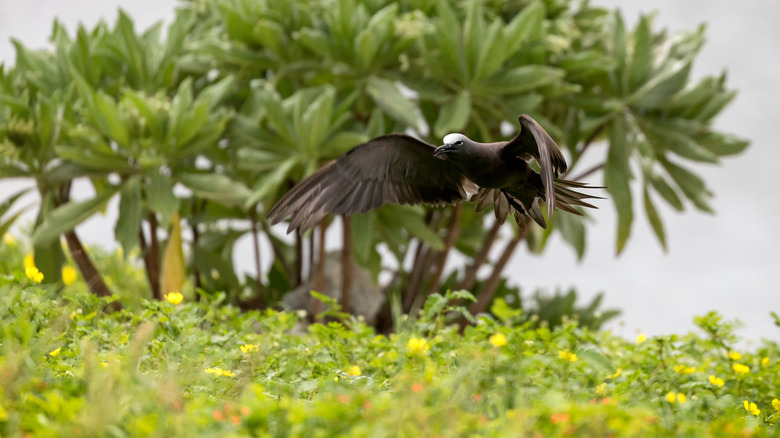Fatal Attraction: How And Why Birds Fall Prey To The Pisonia Tree
The Pisonia tree, commonly found on tropical islands, has earned a dark reputation as the "bird-catcher" due to its disturbing relationship with birds. While most plants rely on birds and insects for seed dispersal, using attractive scents and bright colors to draw them in, the Pisonia tree follows a much more sinister path. Instead of benefiting from bird interaction through simple pollination, the tree ends up killing many of the creatures it lures. This process begins innocently enough: birds land in Pisonia trees to rest, build nests, or feed. However, the tree produces clusters of long, sticky seeds coated in a resinous substance that clings to anything that touches them. As birds brush against the branches, the seeds stick to their feathers, causing a cascade of problems.
In a functional ecosystem, these seeds would hitch a ride with the bird to a new location, where they could fall off and sprout. Unfortunately, the Pisonia's seeds have evolved to be so sticky and abundant that they often overburden the birds. Sometimes a single bird can collect enough seeds to prevent it from flying. Weighed down and immobilized, these birds are in danger from starvation or fall victim to predators. The Pisonia tree's behavior is a stark contrast to the many other plants that benefit from bird activity without harming them. Birds that normally serve as little helpers, spreading seeds and eating pests, become victims in this scenario.
Why Pisonia trees kill birds without gaining any clear benefit
Scientists have puzzled over why the Pisonia tree continues to kill birds with its overzealous seed attachment. Typically, plants evolve to ensure the survival of their seed dispersers, as the partnership benefits both. In theory, dead birds could help fertilize the soil around the tree with their decomposing bodies, but studies have shown that this is not the case. According to Nature Seychelles, research conducted by ecologist Alan Burger on Cousin Island in the Seychelles debunked the idea that the Pisonia tree benefits from bird deaths. Despite the high number of bird carcasses found at the base of these trees, there was no noticeable improvement in seed sprouting or tree health due to the nutrient boost from decaying birds.
This leaves scientists with a troubling conclusion: the Pisonia tree's lethal stickiness may be an evolutionary dead end — a tragic mistake where the plant inadvertently kills its own seed carriers. The tree's survival mechanism seems to have gone too far. The tree also doesn't benefit from these deaths, and studies have shown that the seeds die if exposed to seawater, ruling out the possibility of using bird carcasses as rafts for dispersal across the ocean.
Interestingly, a different species of the Pisonia tree found in Hawaii, the pāpala kēpau (Pisonia brunoniana), once did carry some importance to locals. As noted by the Maui Forest Bird Recovery Project, the sticky substance that the seeds are coated in was traditionally used by Hawaiian bird catchers and applied to tree branches. When unlucky birds would land on these branches, the catchers would take them for their feathers, later used to adorn helmets and other pieces of clothing worn by nobility.
Nowadays, despite the grim consequences for many bird species, some seabirds continue to nest in Pisonia trees. Conservationists on Cousin Island are trying to mitigate the damage by replacing Pisonia trees with other species that won't endanger the birds.

